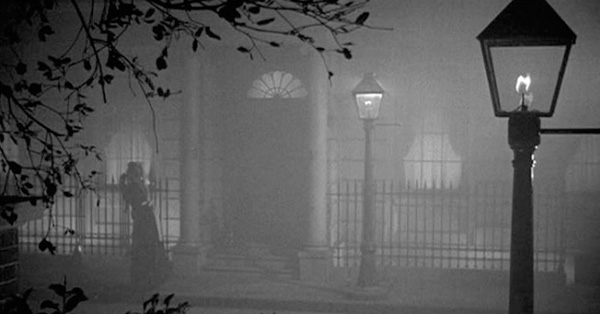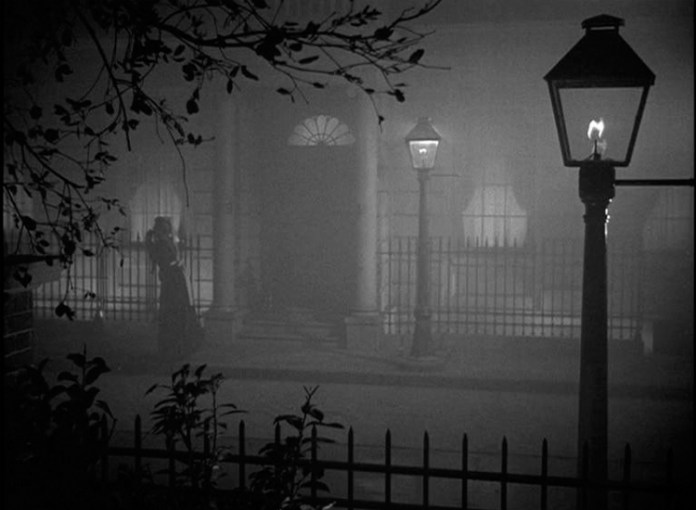
THE MOST HAUNTED HOUSE IN LONDON
Perhaps the most famous of all haunted houses in London is 50 Berkeley Square; a grand four-story brick townhouse constructed in 1740. For several years it was the home of British Prime Minister George Canning. If you pass the building today you will see a commemorative plaque in his honour. However, by the nineteenth century Number 50 had already become known as the most haunted house in London. So widespread was its notoriety that those visiting London would, out of sheer curiosity, frequently come to take a look. A whole succession of terrifying events has plagued the house from that time onwards. Most of these awesome accounts surrounded a gruesome entity said to reside in the top rooms of the building. The appearance of this loathsome ‘thing’ is thought to be so terrifying that many of those confronted by it have literally died from fright. Others, bold enough to have spent the night in the room, have either run off in terror or gone insane.

Possibly the most well-known of stories is the account of two penniless sailors who, on a fog bound London night, sought somewhere to stay. Seeing a street sign, saying the property was to let, they assumed the house was empty and so broke in. They made their way to the top floor where they bedded down for the night. The weary sailors soon fell asleep, but were soon awakened to the sound of lumbering footsteps ascending the stairs. The footsteps paused from a moment outside the room. The door handle then began to turn. Both men sat silently staring towards the door, perhaps expecting to find themselves in the presence of the owner of the house. Instead, what confronted them was a weird, shapeless creature with a huge gaping mouth. This hideous entity seemed to slither into the room rather than walk, all the while glaring menacingly at the two sailors. Seized with panic the two men tried to make their escape. One backed up towards the window while the other rushed past the creature and made his way down the staircase to the safety of the street. He encountered a policeman on the beat who listened to the shaken sailor’s outpourings. Reluctantly the officer agreed to accompany him back inside the house. On reaching the upstairs room they discovered his friend had gone. They then noticed the smashed window pane. Looking out of the window they could see the lifeless body of the sailor’s friend impaled on the iron railings below; his skin pale in the eerie glow of the moonlight and his eyes bulging from their sockets in a fixed stare of abject horror.
A second story involves that of a family named Bentley who later occupied the house. Although the spectre had not made an appearance since the family’s arrival, their young daughters often complained of a foul, musty smell about the place. Unbeknown to the Bentley’s, strange smells were often thought to be indicative of paranormal activity.
At a later date a Captain Kentfield, who was betrothed to one of their daughters, came to visit the house. The night before his arrival a maid, who had been making up his room, had run screaming hysterically from the place. She was in such a frenzied state that the family were unable to console her or discover why she was so alarmed, only that she kept muttering, “Don’t let it touch me.” She was later taken to hospital, but the poor woman died the following day.
When Kentfield arrived the family explained what had happened and felt it best he sleep in another room. The Captain would hear none of it and later that night, showing a stoic military resolve, retired to the haunted room. The house soon awoke to the sound of a blood curdling scream coming from Kentfield’s room, followed by a single pistol shot. The Captain’s dead body was discovered splayed on the floor. His mouth set in a most hideous manner with teeth tightly clenched, but it was his eyes that spelt the most horror, staring manically in a look of utter terror.
One of the few people who stayed in the room, and lived to tell the tale, was Lord Lyttelton. By all accounts, he became so incensed with the stories of 50 Berkeley Square that he made arrangements with the owner to spend the night in the upper room. Lyttelton’s plucky resolve was backed up by him taking along a pair of blunderbusses crammed with buckshot and silver sixpences thought to combat evil forces.
As the night wore on so the intensity grew until Lyttelton sensed something moving in the shadows. He grabbed hold of one of the guns and fired at something that had appeared to leap at him. He later claimed that, in that instant, something fell to the floor ‘like a rocket’. Although shaken he remained in the room for the rest of the night. As the morning light filtered through the window he found no evidence of the ‘thing’ he felt he had shot.
In 1852 a wealthy man named Mr. Myers took possession of the house, which, by that time, had become rather shabby and neglected. Myers set about painstakingly restoring the house to its former glory. He had good reason to do so as 50 Berkeley Square was to become his matrimonial home. Sadly, Myers was jilted by his bride-to-be on his wedding day, from which he never recovered. Overcome with grief he became a recluse and never left the house. He would sleep by day and at night time wander aimlessly around the upper room by the light of a candle. What was to have been a home filled with love and happiness, slowly fell into a state of faded grandeur. His only contact was his manservant who delivered his meals. Rumours began to spread that the house was haunted. These were, no doubt, prompted by glimpse of Myers’ shadowy figure wandering aimlessly about the upper room in the flickering candlelight.
In recent decades the house has been occupied by Maggs Brothers Ltd, the antiquarian booksellers. Furthermore, the phantom, that allegedly made so many dramatic appearances, has remained quiet for some sixty years. However, in 2001 a cleaner, while working in the upper room, had the overwhelming feeling that someone was watching her. Around the same time an employee witnessed a strange brown mist suddenly appear in the upper room. Perhaps, after nearly two centuries, the loathsome entity, that once instilled so much terror into the hearts of its occupants, is finally fading into obscurity.
